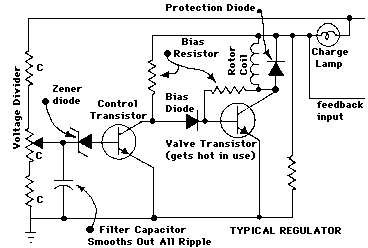DEMAND.
The battery will never demand more than about 10 amps.
You can try to force more current through the battery, but all you will do is heat it up and damage it.
Batteries store energy in CHEMICAL form, and that process takes time to convert electrical energy into chemical energy.
If you try and 'Force Feed' a battery, all you do is heat up the plates and warp them.
Batteries are VERY GOOD at converting chemical energy into electrical energy, so you can discharge a battery much faster than you can charge it.
--------
If you watch an 'Ammeter' (Amp) gauge when a battery is recharging after starting the engine,
With nothing else besides the ignition connected to the electrical system,
You will see the 'Ammeter' go only slightly positive.
As you turn on more accessories in the vehicle, the ammeter will rise to the positive side if the vehicle is charging correctly.
Since the entire production of the alternator goes through the Ammeter, you are seeing what the vehicle is demanding, and the alternator produces to meet that demand.
----------------------------
REGULATION.
The battery will normally draw between 2 & 6 amps only.
When batteries are given exactly what they want, they 'Trickle Charge' with very low amperage.
When you flip on the headlight, there is more demand,
So the alternator
REGULATOR forces more production to meet that demand.
As you increase demand, the alternator puts more current out,
As you decrease demand, the alternator REDUCES output.
That's the entire function of the REGULATOR, to keep up EXACTLY with demand...
-------------------------------------
*IF*...
You exceed the 'Safe' limits for the alternator,
Or demand more current than the alternator can force through a 10 Ga. or 12 Ga. wire and it's fusible link,
The battery will take over and supply the load.
When the heavy load stops, the alternator charges the battery,
No harm, no foul.
Small, working loads, the alternator handles VERY well,
Larger, short duration loads, like the starter motor, the battery takes over and supplies those large current loads.
-------------------------
And just for the record, since we have an 'Argument Hijacker' in the mix,
A 10 Ga. wire is supposed to not exceed 32.5 Amps in capacity.
Here is a link to the Brown & Sharp scale that tells the size, resistance, amp load of about any common size copper conductor.
Link:
http://www.civilianjeep.info/Wiring/B&Sscale01.gif
For a '200 AMP' continuous load, without heating up the conductor, you would have to have a 'OO' gauge conductor (2/0 Ga. 220 amp load)
Which is what I use on my winches because they are NOT continuous duty.
My winch draws about 600 Amps, so they get TWO 2/0 Ga. cables, one from each battery,
And I keep track of how much they heat up in use since they are loaded like crazy when I'm doing a hard pull with the winch...
---------------------------
Now, I realize people use MUCH SMALLER wires/cables than they should, even factories.
It's a cost thing, since you are virtually NEVER going to draw more than the alternator wire will take, or the fusible link will take, they can get away with a smaller wire than the rated output of the alternator.
During the warranty period,
If you were the 1 in 100,000 people that DID overload the 10 Ga. wire and 12 Ga fusible link
It cost them virtually nothing to replace that fusible link or wire,
And they made money on the other 99,999 people.
Same thing with 'Ground' wires.
The reason our vehicles don't have 'Dedicated Ground' wires to electrical components is cost...
The vehicle would live through the 'Warranty' period when new,
And if you had an issue, the dealership mechanic would add a 'Ground' wire to what you were having problems with and send you out the door.
Our head lights often overheat our head light switches, dimmer switches, connectors at the lamps, wires, ect.
A ton of us have un-wraped the harness to find a melted mess of wires...
VERY close to an electrical fire when that insulation gets soggy enough to stick to other wire's insulation...
It's also the reason I say to 'Up-Size' the wires when you replace them.
Never hurts to have a 12 gauge wire go back in where a 14 Ga. wire comes out,
Costs you virtually nothing, and ensures the electrical device you are trying to run gets supplied...
I also say to add 'DEDICATED GROUND WIRES' to anything with current going to them so you don't torture the electrical device you are trying to power up.
Wipers, gauges, lights, everything else works so much better when you supply a 'Ground' to the device instead of relying on painted or rusty metal...
--------------------------
Would you like for me to get technical?
I can explain how a regulator splits/reduces current.
How the regulator limits output in WATTS and in VOLTS,
Would that do you any good? Miniature electronics usually isn't very well received,
Too much math and too tedious, since you can't display it in common terms, you have to use specific electrical schematics, ect.
If you can make sense of this, I can try to explain it,
This is a VERY simple voltage regulator,
If you want to get into a modern automotive regulator, it's about 4 times as much,
But I can try to explain it if you want...













